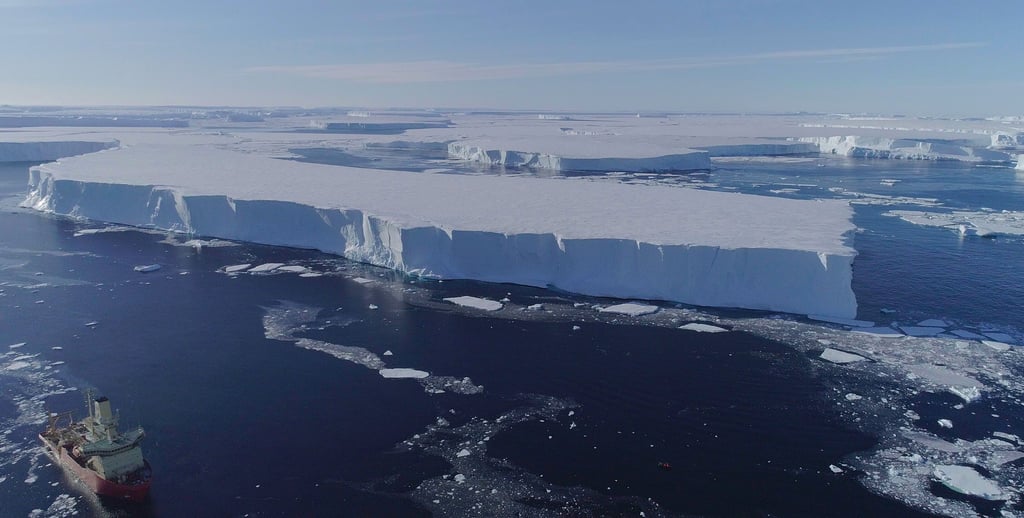Is Doomsday Approaching? The Rapid Melting of The Thwaites Glacier
This glacier, often referred to as the “Doomsday Glacier,” is nicknamed due to its sensitivity to climate change and its potential to flood coastlines around the globe if it collapses.


Thwaites, the widest glacier on the planet, has been a major topic of discussion and a cause of serious concern in recent years. This humongous mass of ice which measures roughly the size of Great Britain, is a part of the West Antarctic Ice Sheet and is roughly equidistant between the UK's Rothera Research Station and the US's McMurdo Research Station.
This glacier, often referred to as the “Doomsday Glacier,” is nicknamed due to its sensitivity to climate change and its potential to flood coastlines around the globe if it collapses. The rapid melting of this massive “drainage system” of Antarctica's ice sheet can be regarded as a disaster in slow motion, also because of its peculiar structure and geographic location. Since the bedrock under the Thwaites Glacier is located below sea level and slopes downwards inland, the glacier gets deeper towards the interior of the West Antarctic Ice Sheet. This inward slope aggravates the glacier's susceptibility to losing more ice by melting and flowing down the slope.
Photo courtesy of zuma press
According to a 6-year long research conducted by a group of scientists from the US and the UK, a vast area of the glacier continues to retreat. Since 2018, researchers have uncovered a complex, rapidly changing environment at the Thwaites Glacier. Before the launch of the International Thwaites Glacier Collaboration (ITGC) project, little was known about the mechanisms of controlling the retreat of Thwaites. The studies have predicted that if it collapsed, sea levels would rise by 65 centimeters. Currently, Thwaites contribute around 4% of all global sea level rise.
In 2024, the ITGC research indicated that there is a wider grounding zone that is regularly exposed to relatively warmer melted ice, potentially increasing the rate of loss of ice, and doubling the rate of what was previously supposed to happen along a narrower grounding line. Preliminary results from one of ITGC’s modeling groups suggest that in coming decades, Thwaites will steadily retreat but not collapse, contributing up to 6 centimeters of global sea level rise by century’s end. Scientists using satellite imagery and hydraulic modeling found that warming tidal currents are permeating the massive block of ice at depths as great as 3.7 miles, causing “vigorous melting.”
Some engineering interventions have been proposed to physically stabilize or preserve the Thwaites Glacier and the nearby Pine Island Glacier. These interventions would be designed to block the flow of warm ocean water and thereby prevent the further melting and eventual collapse of the glaciers. Proposals include building sills at the Thwaites grounding line and installing constructions that would block at least 50% of the warm water flow. Yet the researchers acknowledge that these kinds of interventions are extremely complex as well as expensive to actualize. Moreover, current interventions cannot prevent sea level rise from increased ocean heat content permanently. They would be rendered ineffective in the long term unless greenhouse gas emissions and the carbon footprint are significantly reduced to tackle climate change and global warming.
References
https://www.science.org/content/article/doomsday-may-be-delayed-antarctica-s-most-vulnerable-glacier


DESIGN courtesy of thwaitesglacier.org
